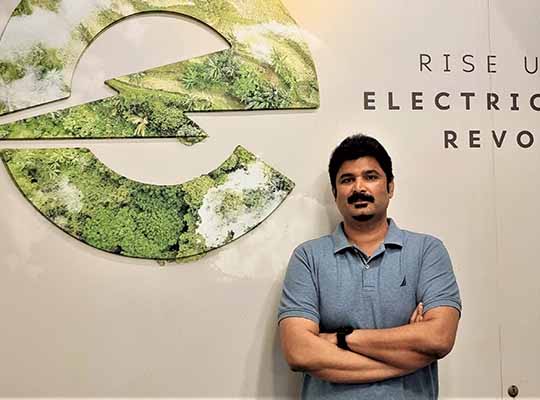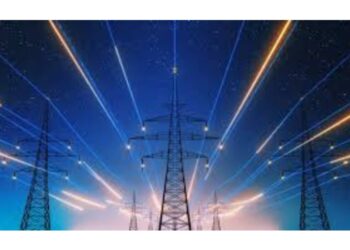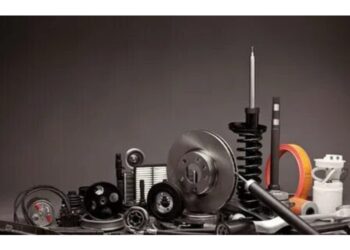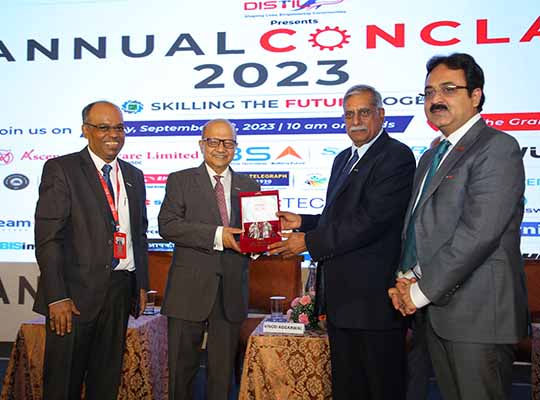India, a country renowned for its bustling cities and vibrant urban culture, has long been grappling with the twin challenges of air pollution and traffic congestion. According to a IQAir, 2019 report, 21 of the world’s 30 cities with the worst air pollution are in India. As urbanization continues to surge, innovative solutions are needed to address these pressing issues. But in recent years, India’s urban landscape has been undergoing a significant transformation, thanks to the rapid rise in the adoption of electric two-wheelers. With their eco-friendly attributes, affordability and the government’s proactive push, electric two-wheelers have emerged as a key player in the battle against pollution and traffic congestion in the country’s bustling cities.
A Paradigm Shift: From Petrol to Electric
The adoption of electric two-wheelers in India is witnessing a meteoric rise, driven by a combination of factors that align with the nation’s goals of sustainable development and environmental preservation. According to a NITI Aayog and TIFAC, 2021 report, the projected sale of electric two-wheelers is expected to reach 54.91 lakh units by FY 2031, at a market penetration of 21.86%. One of the most significant factors behind this shift is affordability. Electric two-wheelers, with their lower operating costs and reduced maintenance requirements compared to their conventional counterparts, are emerging as an attractive option for the average Indian commuter.
The Affordability Factor
One of the primary driving forces behind the surge in electric two-wheeler adoption is their affordability. In a country where the majority of the population resides in urban areas and relies heavily on two-wheelers for daily commutes, the lower operating costs of electric vehicles (EVs) are a compelling incentive. With electricity costs significantly lower than gasoline, electric two-wheelers offer a more cost-effective mode of transportation over their fossil-fuel counterparts. Bloomberg New Energy Finance, 2020 estimates electricity cost being 50-70% cheaper than gasoline on a per-mile basis.
Additionally, the reduction in maintenance expenses due to fewer moving parts and a simpler drivetrain design makes these vehicles economically attractive for urban dwellers. As per EV Obsession, 2019 the maintenance costs are estimated to be 40% lower than their petrol counterparts.
Charging Infrastructure Revolution : Paving the Way Forward
While concerns about charging infrastructure were once a significant deterrent for electric vehicle adoption, India has taken remarkable strides in this direction. The proliferation of electric charging stations in urban centers is instrumental in alleviating range anxiety among potential buyers. As the charging network expands, consumers are becoming more confident in making the transition to electric two-wheelers. The “National Electric Mobility Mission Plan” aims to establish a robust charging infrastructure network across the nation, making EV charging accessible and convenient for all. India aims to establish 400,000 charging stations by 2026 to meet the demands of 2 million EVs (National Electric Mobility Mission Plan, 2020). Moreover, advancements in battery technology have led to faster charging times and longer ranges, alleviating range anxiety and making electric two-wheelers a more practical choice for daily commuting. As per Battery University, 2021, some batteries now capable of achieving an 80% charge in just 30 minutes.
Government Incentives and Policies
The Indian government’s proactive approach to promoting electric mobility has played a pivotal role in the growing popularity of electric two-wheelers. Incentives such as subsidies, tax breaks, and reduced GST rates have made electric vehicles more attractive to consumers. The Indian government has allocated ₹10,000 crores for Phase II of the Faster Adoption and Manufacturing of Hybrid and Electric Vehicles (FAME) scheme to promote electric mobility (Ministry of Heavy Industries, 2019). State governments are also joining the movement, introducing policies that promote the adoption of EVs through exemptions from road tax and registration fees. These incentives not only lower the upfront cost of electric two-wheelers but also encourage a shift towards cleaner transportation alternatives.
Sustainability and Pollution Reduction
One of the most significant advantages of electric two-wheelers is their positive impact on the environment. India’s urban areas are notorious for high levels of air pollution, primarily caused by vehicular emissions. Electric two-wheelers produce zero tailpipe emissions, thus contributing to improved air quality and public health. This reduction in pollution aligns with the nation’s commitment to sustainable development and its goals to mitigate climate change.
Furthermore, the environmental benefits of electric two-wheelers extend beyond reducing air pollution. The electricity required to power these vehicles can increasingly come from renewable sources, further diminishing their carbon footprint. This shift toward cleaner energy not only benefits the cities but also aligns with India’s commitments to global climate action. India aims to reduce its carbon footprint by 33-35% from its 2005 levels by 2030 (Ministry of Environment, Forest and Climate Change, 2015).
Mitigating Traffic Congestion
Urban congestion is another critical issue that electric two-wheelers can address. With compact dimensions and agile maneuverability, these vehicles are well-suited for navigating through traffic-clogged streets, reducing the overall traffic congestion. By taking up less road space and reducing traffic jams, electric two-wheelers enhance the overall traffic flow and commuting experience for all road users. As more individuals opt for electric two-wheelers, the strain on public transportation systems and road networks can be eased, leading to smoother traffic flows and shorter commuting times. Electric two-wheelers can significantly reduce traffic congestion, a problem that costs the Indian economy $22 billion annually in fuel wastage (Boston Consulting Group, 2018).
The Road Ahead
As India continues its journey toward a greener and more sustainable future, electric two-wheelers are set to play an increasingly integral role in shaping the urban landscape. The collaboration between the government, private sector, and consumers has spurred a revolution in transportation, paving the way for cleaner air, reduced congestion, and improved quality of life in cities across the country.
While challenges like battery costs, which currently make up 30-40% of the vehicle cost (McKinsey & Company, 2020), still exist, limiting affordability for some segments of society. Ensuring that the electricity powering these vehicles comes from renewable sources also requires continued efforts. Nonetheless, the potential benefits in terms of reduced pollution, traffic congestion, and improved urban livability make these challenges worth addressing.
The rise of electric two-wheelers in India’s urban landscape is a phenomenon driven by a combination of affordability, evolving charging infrastructure, and government incentives. These vehicles not only offer an economic advantage but also contribute significantly to the reduction of pollution and traffic congestion. With innovation and continued support, electric two-wheelers are poised to reshape the way Indians commute and pave the path for a more sustainable future. By embracing this transition, Indian cities can look forward to improved air quality, reduced traffic congestion, and a shift towards a more environmentally conscious way of commuting.
About the Author:
Dr. Irfan Khan
The author is the Founder & CEO of eBikeGo (https://ebikego.com), a sustainable mobility company that aims to make world-class electric mobility solutions that transform how people move. Mobility must transform if people are to thrive; but the industry’s emphasis is on economy & efficiency, not excellence. eBikeGo is driven towards creating a suite of customer-centric electric mobility solutions, empowering people to seize the moment and the future.












